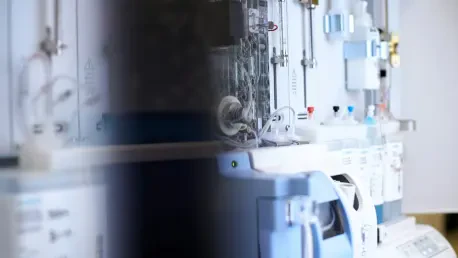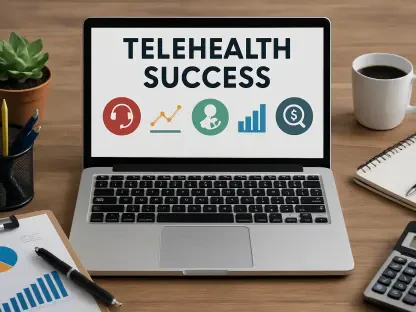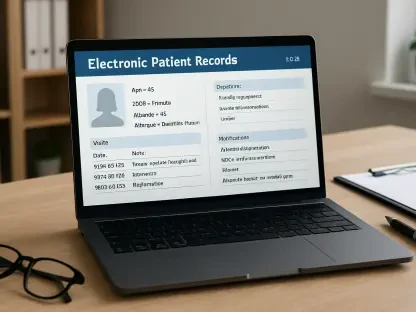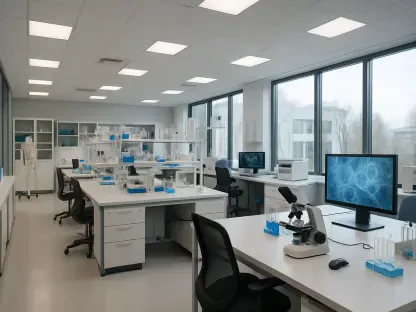In this insightful conversation, we sit down with James Maitland, an expert in robotics and IoT applications in medicine. With extensive experience in leveraging technology to advance healthcare solutions, Maitland offers a unique perspective on how the FDA’s recent staff cuts may affect communication regarding medical device safety. This discussion touches upon crucial themes, such as the impact of these layoffs on public health notices, the role of communication staff in the FDA’s Center for Devices and Radiological Health, and the broader implications for patient safety.
Can you explain the impact of the FDA’s mass staff cuts on public notices about medical device recalls and safety issues?
The FDA’s staff cuts, especially within the Center for Devices and Radiological Health, have created significant concerns about the timeliness and effectiveness of public health communications. These layoffs have led to fewer personnel available to draft and disseminate notices about medical device recalls, which are crucial for keeping patients informed about potential safety issues. Without these tailored communications, there’s an increased risk of delayed dissemination of critical safety information to healthcare providers, patients, and the general public.
What role did the communications staff in the FDA’s Center for Devices and Radiological Health play in drafting safety notices?
The communications staff were pivotal in drafting safety notices, ensuring that complex technical information was translated into clear and accessible language. They worked closely with the Office of Product Evaluation and Quality and other departments, crafting messages that could be understood by all stakeholders, from medical professionals to laypersons. Their work ensured that the public received accurate and timely updates on high-risk recalls and safety concerns.
How might the reduction in communications staff affect the speed and clarity of public notices?
With fewer staff members available to manage communications, there’s a tangible risk that public notices on recalls and safety alerts will be delayed or lack the clarity and precision that were previously prioritized. Overworked review teams, now burdened with these additional responsibilities, might not manage to process priority communications efficiently, potentially causing critical information to reach patients and providers much slower than before.
Can you describe the pilot program implemented under CDRH Director Michelle Tarver for faster public notification of high-risk recalls?
Director Michelle Tarver initiated a pilot program aimed at expediting the process for notifying the public about high-risk recalled devices. This program allowed for faster alerts by streamlining the approval process and focusing on the most urgent safety concerns. However, the success of this initiative heavily depended on the communication staff, who were integral in crafting and disseminating these alerts.
How has the frequency of recall notices and early alerts changed since the staff cuts in March?
Since the layoffs, there has been a noticeable decrease in the frequency of recall notices and early alerts. Previously, the FDA averaged around seven recall notices per month, but this number has declined, with some months seeing as few as two or three alerts. This drop indicates a significant slowdown in how safety information is relayed, which could undermine public trust in the FDA’s ability to manage health risks effectively.
What differences have you noticed in the latest recall notices compared to previous ones in terms of clarity and accuracy?
Recent recall notices have displayed inconsistencies and inaccuracies that were not typical in the past. For instance, some communications have mislabeled issues or failed to use plain language, which can create confusion among healthcare providers and the public. This decline in clarity highlights the challenges faced by reduced teams trying to maintain previous standards of excellence in communication.
Who is responsible for drafting recall notices and early alerts now?
It’s unclear who has assumed the responsibility for drafting these crucial documents. With the departure of many experienced staff, this task may fall to less experienced individuals or overburdened teams who originally had different responsibilities. This uncertainty contributes to the challenges of maintaining robust and reliable communication channels.
Why are public meetings by the CDRH considered important for communication and recall processes?
CDRH public meetings have historically been platforms for gathering input on recall processes and ensuring transparency in communication practices. These meetings facilitate dialogue between the FDA, healthcare providers, and industry stakeholders, allowing for the exchange of information that can improve device safety protocols and recall strategies.
How have the layoffs affected the scheduling and frequency of CDRH’s public meetings?
There has been a notable reduction in the number of public meetings held by the CDRH since the layoffs began. Prior to the cuts, these meetings were regular and provided updates and clarifications on recalls. The current decrease in frequency further exacerbates concerns about the transparency and efficiency of FDA communications related to medical devices.
What concerns do experts outside the FDA have regarding slower communication due to the layoffs?
Experts outside the FDA worry that slower communications could lead to delayed responses to safety issues, potentially putting patient health at risk. Delays in information dissemination can prevent healthcare providers and patients from taking timely actions to mitigate risks associated with faulty or harmful medical devices.
In what ways can the transparency and engagement of the FDA be restored to ensure patient safety?
To restore transparency and safeguard patient safety, the FDA needs to re-engage with the public and industry stakeholders actively. This involves not only increasing the frequency of recall notices and public updates but also ensuring these communications are clear and comprehensive. Additionally, resuming regular public meetings would help to reestablish trust and facilitate open dialogue.
How do public statements and meetings contribute to improvements in device safety and recall clarity?
Public statements and meetings provide an opportunity for the exchange of vital information that can lead to actionable insights into device safety improvements. They allow for feedback from multiple perspectives, which is crucial in developing more effective recall procedures and enhancing the clarity of communications issued by the FDA.
In your opinion, what steps should be taken to address the communication slowdown at the FDA?
Addressing the communication slowdown requires a strategic plan to rebuild the communications team, emphasizing the hiring and training of skilled professionals who can adeptly handle the complexities of medical device safety notifications. In addition, leveraging technology to automate certain communication processes could improve efficiency and ensure timely delivery of critical safety information. Ultimately, prioritizing transparency and a collaborative approach will be key in regaining public trust and maintaining high standards of patient safety.









